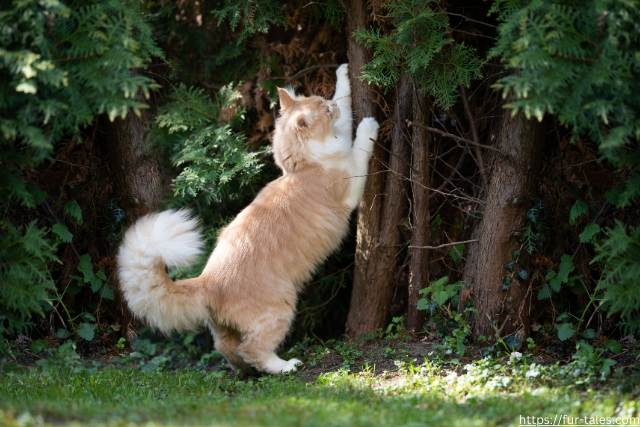
How Do Cats Mark Their Territory?
Cats are territorial creatures by nature. Whether they live indoors or outdoors, they rely on scent marking to establish boundaries, communicate with other cats, and create a sense of security. While this behavior is natural, it can sometimes become a problem, especially when cats start marking inside the house. Understanding why cats mark their territory and how to manage it can help maintain harmony in your home.
How Do Cats Mark Their Territory?
Cats use several methods to claim their space and send messages to other animals:
1. Scent Glands
Cats have scent glands located on their cheeks, chin, forehead, paws, and the base of their tail. They rub these areas against objects, people, or other animals to leave their scent. This type of marking is a sign of comfort and familiarity rather than a territorial dispute.
2. Scratching
Scratching serves multiple purposes—it helps cats maintain their claws, stretch their muscles, and, most importantly, mark their territory. Cats have scent glands in their paws that release pheromones when they scratch, signaling ownership of a particular space or object.
3. Urine Spraying
Urine spraying is the most notorious form of territorial marking. Unlike regular urination, which happens on horizontal surfaces, spraying typically occurs on vertical surfaces like walls, furniture, and doors. Both male and female cats can spray, though it’s more common in unneutered males.
4. Middening (Feces Marking)
Less common than urine marking, middening involves cats leaving feces in specific locations to assert dominance. This behavior is more typical in outdoor or feral cats but can occasionally happen indoors.
Why Do Cats Mark Their Territory?
1. Establishing Boundaries
Cats mark their territory to let other animals know what areas belong to them. This is especially common in multi-cat households where competition for space can arise.
2. Stress or Anxiety
Changes in a cat’s environment, such as moving to a new home, introducing a new pet, or rearranging furniture, can trigger territorial marking as a response to stress.
3. Mating Behavior
Unneutered cats are more likely to mark territory as a way to attract potential mates. This is especially common in male cats, who spray urine to signal their availability to females.
4. Medical Issues
Sometimes, what appears to be territorial marking is actually a medical problem, such as a urinary tract infection or bladder issue. If your cat suddenly starts marking inappropriately, a vet check is a good idea.
How to Prevent or Stop Territorial Marking
1. Neuter or Spay Your Cat
One of the most effective ways to reduce territorial marking, especially urine spraying, is to have your cat neutered or spayed. This can significantly decrease the drive to mark territory for mating purposes.
2. Clean Marked Areas Thoroughly
Use an enzymatic cleaner to eliminate the scent of urine and prevent re-marking. Avoid using ammonia-based cleaners, as they can mimic the smell of urine and encourage further marking.
3. Provide Multiple Resources
In multi-cat households, territorial disputes can arise when there aren’t enough resources (food bowls, litter boxes, resting spots). Ensure each cat has their own space and access to essentials.
4. Use Synthetic Pheromones
Products like Feliway mimic natural feline pheromones and can help reduce stress-related marking. These diffusers or sprays create a calming environment for your cat.
5. Increase Play and Enrichment
Boredom or anxiety can lead to territorial marking. Interactive toys, scratching posts, cat trees, and puzzle feeders can help keep your cat engaged and reduce stress.
6. Address Anxiety and Changes
If marking is triggered by changes in the home, try to introduce new elements gradually. Providing familiar scents (like blankets or bedding with their scent) can help ease transitions.
7. Consult a Veterinarian or Behaviorist
If your cat’s marking behavior is persistent, a vet visit can rule out medical causes. A feline behaviorist can also provide tailored solutions to manage territorial behavior.
Final Thoughts
Marking territory is a natural behavior for cats, but when it becomes a problem indoors, understanding the underlying cause is key to stopping it. By providing a stress-free environment, addressing medical concerns, and using positive reinforcement, you can help your cat feel secure and reduce unwanted marking behaviors. With patience and the right strategies, you can maintain a peaceful home for both you and your feline friend.
